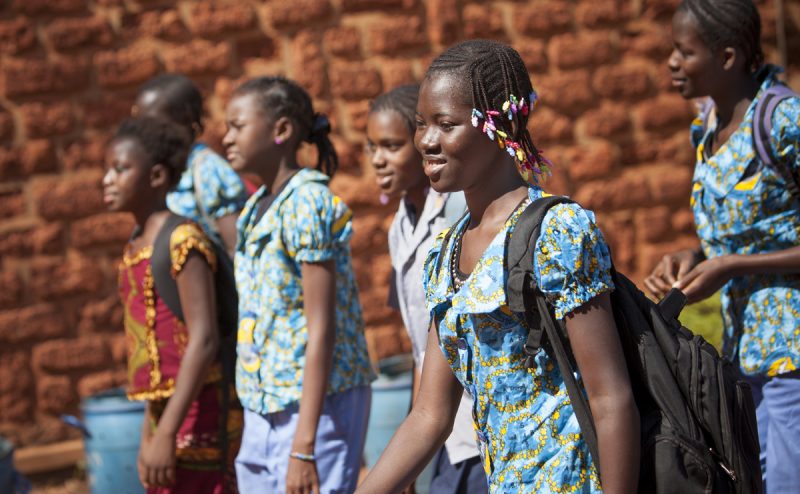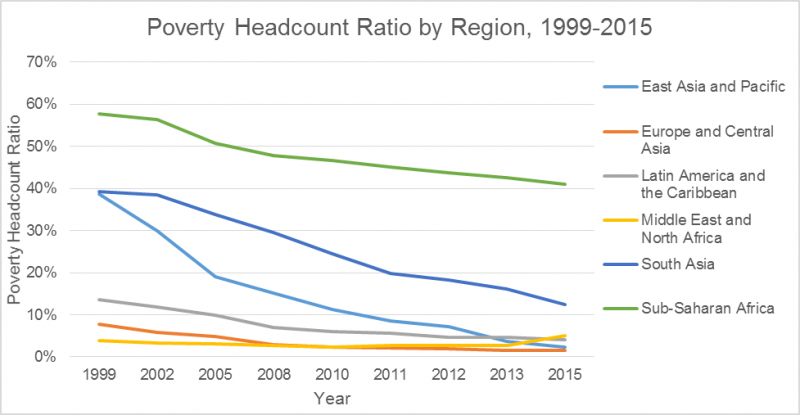
MCC
MCC works around the world to reduce poverty through economic growth.
In the push to end global poverty, the common refrain is that we have seen unprecedented momentum towards this end over the past two decades, but questions remain on whether progress is likely to continue or stall in the days ahead. The publication of 2015 PovcalNet data from the World Bank provides a new opportunity to evaluate progress at the global, regional and country levels—both over the long term and more recently.
At a global level, we have far exceeded the MDG1 target of halving the proportion of people living in poverty by 2015. Using the international poverty line of $1.90 a day, PovcalNet data showed that poverty in 2015 had dropped all the way to 10 percent, just over one third of where we were in 1999 (28.6 percent). While we should celebrate this progress to date, there are two other concerning trends worth highlighting.
First, poverty rates are not falling fast enough. The latest data shows that the global poverty rate declined from 11 percent in 2013 to 10 percent in 2015, a change of just one percentage point compared to the almost five percentage point drop between 2002 and 2005. At this rate, we will not meet the global goal of eliminating poverty by 2030.
Second, aggregating progress at a global level masks significant regional disparities. For example, Asian regions have seen economic advancement and sharp declines in poverty, due in large part to rapid growth in India and China. From 1999 to 2015, poverty in South Asia declined by over 60 percent—an outstanding achievement if this figure were not dwarfed by an almost 95 percent decrease in poverty in East Asia and the Pacific.

Data from World Bank
In contrast, we do not see the same progress in sub-Saharan Africa. While the poverty rate in this region declined from 57.7 percent in 1999 to 41.1 percent in 2015, this is a small decrease compared to Asia. Additionally, the absolute number of poor has actually increased from 376 million in 1999 to 413 million in 2015. This unwelcome trend is due in large part to rapid population growth. The recent Goalkeepers Report from the Gates Foundation calls this out: “…decades of stunning progress in the fight against poverty and disease may be on the verge of stalling…because the poorest parts of the world are growing faster [in population] than everywhere else.” If this trend continues, projections indicate that 87 percent of people living in extreme poverty will be concentrated in sub-Saharan Africa by 2030.MCC is well-positioned to help address these regional trends with two thirds of our programs focused in African countries and an increasing focus on mobilizing the development finance necessary to accelerate progress. The international community’s aspiration to marshal more development finance is greatly strengthened by the recent passage of the BUILD Act, signed into law this month. The law creates a new International Development Finance Corporation (IDFC) that will draw on the core principles of MCC’s investment model, such as utilizing MCC’s constraints to growth analysis.
Additionally, the AGOA and MCA Modernization Act was signed into law by President Trump in April, and enables MCC to promote regional collaboration, trade, and economic growth through regional compacts. Passed with bipartisan support through Congress, both these Acts emphasize the key role MCC can play in the coming years. So although this new World Bank data does not reveal a groundbreaking change of course, it does solidify what we already know: we have made amazing progress, but it’s still not enough. We must increase our efforts, especially in sub-Saharan Africa, to promote poverty reduction through economic growth and propel us forward to meet the goal of eliminating poverty.

